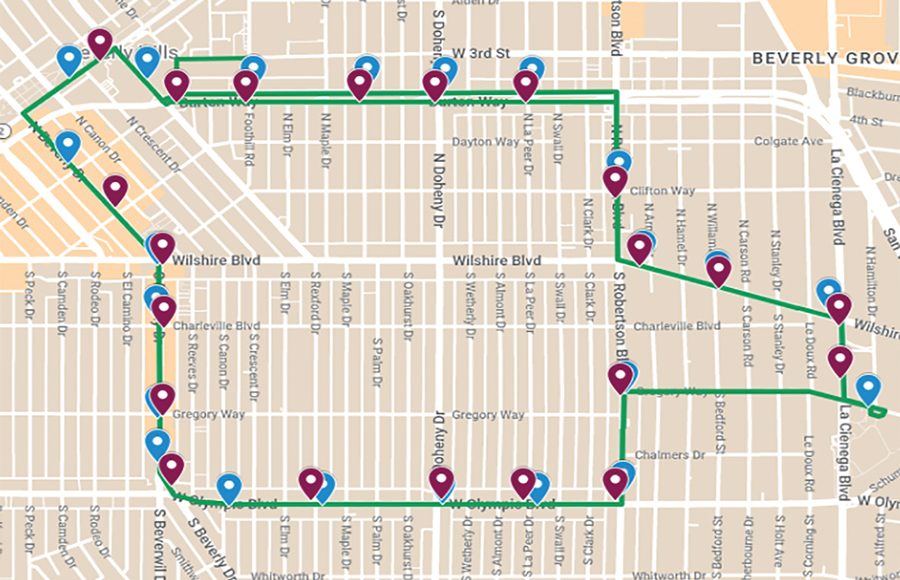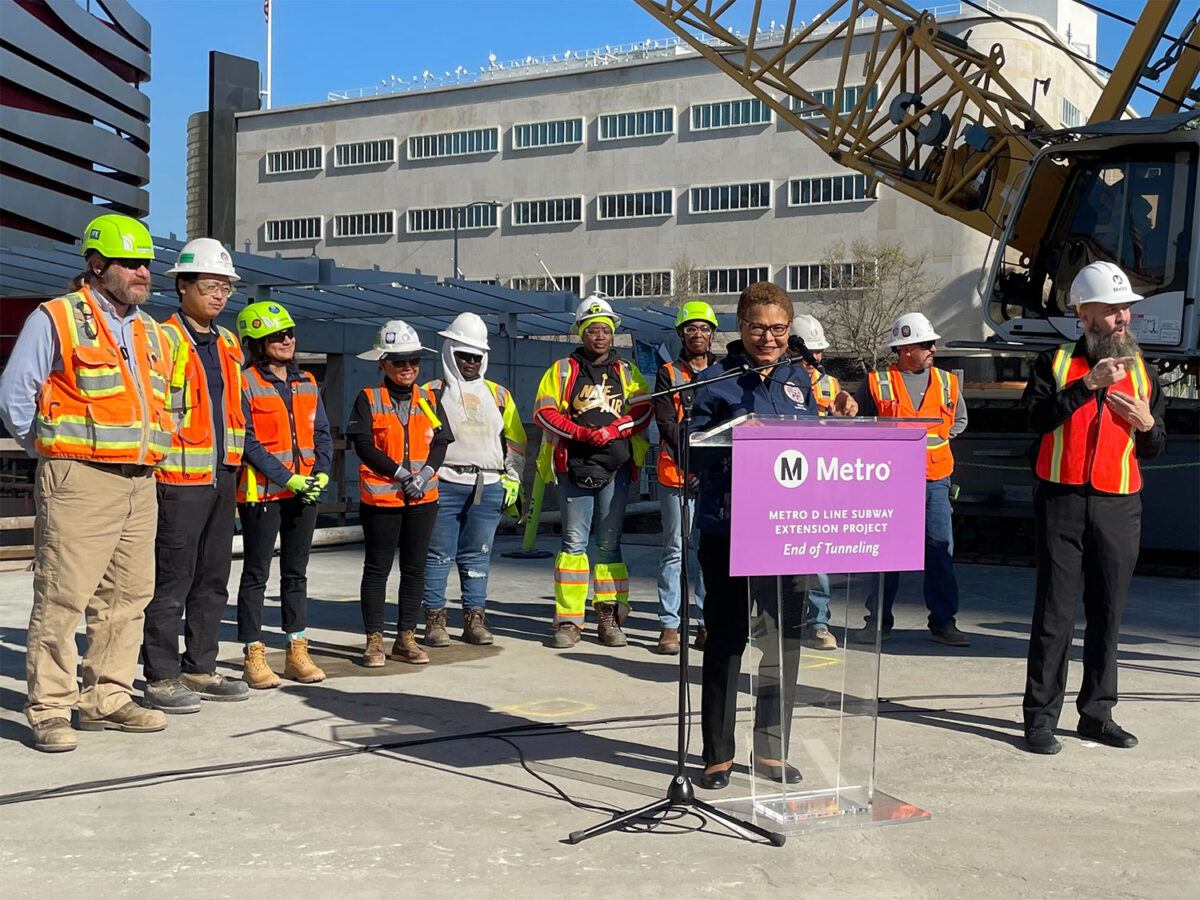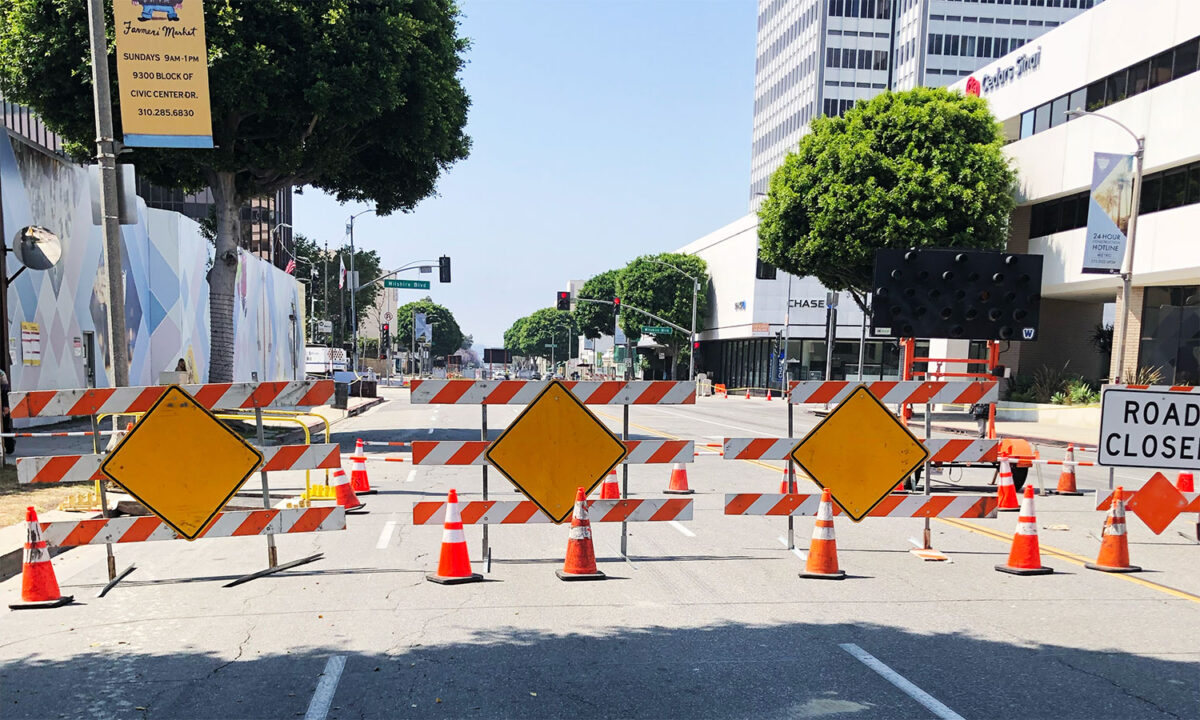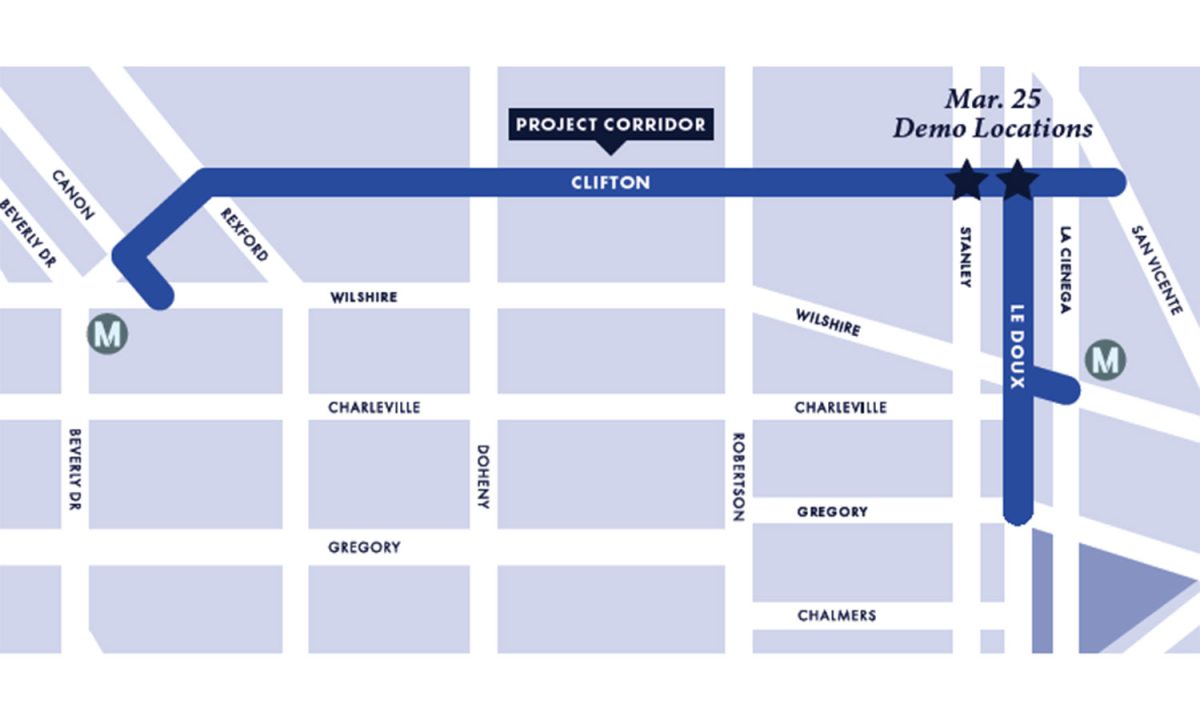Despite objections raised by several city leaders, members of the Beverly Hills Traffic and Parking Commission have decided to move forward with its plans to launch a transit pilot program this summer, which will include a new circular bus route near the bustling business district and an on-demand microtransit system for people traveling between more widely spaced and sparsely populated areas of the city.
Some of the major concerns and criticisms – which have been raised by members of the Planning Commission, Community Advisory Committee and Public Works Commission – are regarding the proposed circular bus route and the ways in which the city has been rolling out the one-year pilot program, which will cost approximately $3.5 million.
Beverly Hills Planning Commission Chair Myra Demeter told the Courier that she is concerned the pilot program will fail because the circular bus route will not attract robust ridership and that the proposed route will not adequately service the city.
Demeter is one of two Planning Commission representatives who were part of original discussions about the pilot program. She is also one of several city leaders who signed a public letter expressing concern about the pilot program.
Demeter said the idea for a new transit system in Beverly Hills was born from discussions that members of the Community Advisory Committee had in August 2021 about ways to reduce the city’s greenhouse gas emissions.
The committee learned that approximately 50% of the city’s greenhouse gas emissions were from motor vehicle trips to, from or within the city. Members of the advisory committee had originally advocated that the Traffic and Parking Commission draft a preliminary plan and get input from vendors before extensive community engagement and specifics of a proposal be drafted.
“It is disheartening to see our hard work ignored and not reflect what we brought forth and voted on,” she told the Courier. “The proposed route does not reflect our purposes or our discussions. It does not adequately service the city.”
Several aspects of the pilot transit program have yet to be flushed out and remain unclear, including possible bus stop locations, types of vehicles, passenger capacity and operating hours. The Traffic and Parking Commission directed staff during its Jan. 5 meeting to continue refining details of the pilot program and to report back with their findings in the coming weeks.
The purpose of the one-year pilot program is to offer the community convenient and reliable public transportation in areas of the city that haven’t been served in the past, City Engineer Daren Grilley told the Courier. The program is also part of Beverly Hills’s long-term plan to provide residents with a climate-friendly alternative to their cars.
“The staff that’s working on this is excited,” said Grilley. “[They] want to develop a program that is successful.”
But city officials acknowledge that one major challenge has been getting residents to provide feedback about the proposed pilot transit program. At the Jan. 5 meeting, the Traffic and Planning Commission asked residents to fill out a new survey that’s available until Jan. 13 or to share their thoughts during public meetings or in emails.
Links to the surveys – which are currently only available in English – have been posted on social media platforms and distributed in emails, flyers and newspaper advertisements.
Results from the new survey will be discussed during the Traffic and Parking Commission’s Feb. 2 meeting. Commissioners will present their recommendations to members of City Council sometime later in February or March.
“There are a lot of pieces that need to be put in place before we put out such an expensive program, so we want to make sure the community has a voice in this,” said City Transportation Planner Martha Eros.
Planning Commissioner and long-time Beverly Hills resident Peter Ostroff believes that relying on public surveys defeats the original purpose of the transit pilot program, which was supposed to challenge years of ingrained driving habits. Ostroff said he is frustrated that the proposed route for the bus circulator is not comprehensive enough to motivate residents to get out and use it.
“The notion was to have what I would call a ‘grant experiment,’ to see if we could change people’s lifetime habits of hopping in their cars to go three blocks or three miles,” he told the Courier. “For me to go to Whole Foods it’s a two-mile drive and it would be nice to know that every 15-20 minutes there would be a bus that could take me to where I want to go.”
He added, “I felt that the way they sort of went about this was backwards. They hired consultants who conducted an attitude survey. That was pointless. We know the attitude of public transportation in Beverly Hills. The route ignores most of the city. If you look at it you wonder what purpose this serves?”
The consultant group that Ostroff is referring to is Kittelson & Associates Inc., a Portland-based transportation planning firm that spearheaded the city’s transit needs assessment in September 2022. The consultants found that one major area of improvement that the fixed-route bus circulator would help address is north-south connectivity.
But Demeter said that drastically reduces the scope of the original project.
“We spoke about the need for a comprehensive route – one that would service the schools, metro stations and other critical areas. This meant that it would be east-west and north-south,” she told the Courier.
Grilley remains confident that the integrity of the proposed pilot program remains intact and said it will make it easier for workers, residents and visitors to get around while also helping reduce the city’s carbon footprint and fight traffic congestion.
“The pilot program is flexible. The purpose is to find out how it works. Things can be adjusted. It’s about adding options, he said. “A lot of questions can be answered during the pilot process because it needs to be observed,” he said.
The pilot program’s circular bus route will be free of charge or at a minimal cost. It will consist of one fixed bi-directional route operating approximately every 15 minutes on major streets south of Santa Monica Boulevard.







